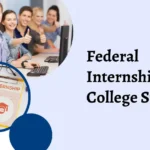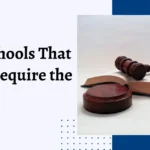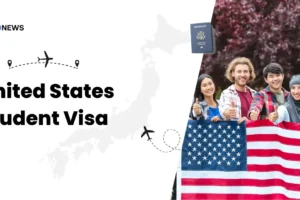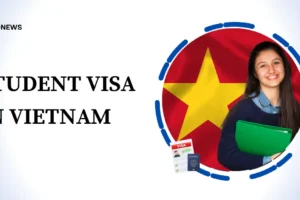During the M1 Visa Interview Questions, students are usually asked about the specific vocational courses they intend to pursue in the United States. These courses may include culinary classes, flight school, technical courses, cosmetology, and mechanical classes. M1 visa applicants can attain a driving license, open a bank account, and seek transfer during the first 6 months of their education.
Table of Contents
The M1 student visa does not limit how many students can be picked, so anyone who meets the requirements can be granted a visa.
In this blog, we have condensed a list of questions that applicants can refer to before interviewing with the officials. This would give the applicant an insight into the potential questions they have to be prepared for to get their visa accepted.
What is a M1 student visa?
The M1 student visa is for students who want to pursue courses in non-academic or vocational fields, such as baking, aviation, or cuisine. Those with M-1 visas for technical and vocational programs are not permitted to work in the country while they are enrolled in classes.
Additionally, candidates for M-1 student visas must show proof of having enough money on hand right now to cover their living expenses and tuition for the duration of their projected stay.
The visa application must be submitted by the students at least a year in advance of their start date.
What are the requirements for an M1 student visa?
As there is no annual cap on the number of permits granted, students must fulfill the prerequisites in order for their applications to be approved. The different eligibility requirements are:
- The SEVP institution ought to choose the student.
- Before they may start their studies, the students must pay the program’s full cost.
- The students’ ability in English should be high enough for them to pass their vocational course. Students must demonstrate their English competence by completing exams like the TOEFL and IELTS.
- It is mandatory for the students to possess a non-immigrant intent, signifying that they intend to return to their home country upon completion of the course. Students can demonstrate proof of a permanent overseas address or strong familial links in order to accomplish this.
- The pupil ought to be able to support themselves financially. They would be required to provide proof, such as bank account statements, to vouch for the same.
- You have been admitted to a full course of study at a vocational institution approved by the U.S. Citizenship and Immigration Services (USCIS). The institution must send you a Form I-20 M-N, certificate of eligibility for nonimmigrant (M1) student status for vocational students.
- Your intended education in the United States would be beneficial in your home country, which would encourage you to depart the country after your studies are finished.
Sample of M1 Visa Interview Questions?
1. Why do you want to study in the USA?
probable answer: I have always been extremely passionate about (your selected course) I have carried out thorough research about the course globally and I believe pursuing it in the United States would provide me a global exposure and a competitive edge over other candidates.
2. Why do you want to go to this particular school or institution?
After carrying out extensive research, (your school name) stood out to me due to its cutting-edge facilities, experienced trainers and its history of producing successful people in this field. Moreover, their curriculum and academic schedule align perfectly with my career goals and aspirations.
(Mentor your course details as much as possible. This includes details such as instructor names, notable alumni, etc)
3. How are you planning on funding your education?
I have saved some funds for my education and my family has set aside some educational funds for my studies. Moreover, I have secured a scholarship that covers 50% of my tuition costs as well.
(Talk about your education loan if you have applied for any. Mention scholarship only if you have genuinely secured one.)
4. What are your plans after you are done with this course?
Upon completing my course, I plan to return to my home country (mentioned here). My country has witnessed significant growth in (your industry) and I wish to contribute to its expansion with this knowledge and skills I gain in the United States.
(Here, you have to emphasise your strong ties with your home country and assure the officer that you have intentions of going back.)
5. How is the course going to benefit you?
With M1 training in the US in (your course), I will gain practical and theoretical experience and exposure that will be incomparable to anything. This will improve my chances of employability back at my home country where there is a demand for trained professionals in (your field).
6. How did you find out about this school or institute?
Upon carrying out extensive research, I figured out this is the best college for me. However, I connected with alumni from the (your school name) as well. Their success stories and positive feedback about the school gave me the confidence to apply.
7. What other schools or institutions have you applied to?
I applied to (XYZ school) and (ABC school). However, upon comparing the curriculum and opportunities, (chosen school) was my top choice.
(Be honest here. If you have applied in other places, make sure you are mentioning it.)
8. Do you have relatives in the USA?
Yes. my (your relative) lives in (state). However, my primary purpose for this trip is purely education based.
9. Why didn’t you choose a similar course in your home country>
Although there are some good institutions in my home country, the United States offers a much more holistic and hands-on approach. This international exposure and diversity in training methods in the United States are unparalleled.
10. How are you planning to manage cultural differences in the USA?
I am the kind of person who embraces diversity. I have attended various international workshops before and loved learning different cultures. Additionally, this is a great way to expand my horizons.
(Always show keen enthusiasm for cultural exchange and highlight your past experiences where you have adapted to the environment.
11. How do we know you will return to your home country after your training?
I’m deeply rooted in my native nation. There, my parents and siblings live with me and my family. I’ve been in talks about post-training opportunities with local firms, so I have professional commitments set up. In addition, I’m passionate about and intend to expand upon my ongoing community efforts when I return. Even if studying in the United States is an unmatched experience, my long-term objectives and obligations are firmly rooted in my own country.
12. Why are you not choosing a different visa type or a longer degree option?
My chosen degree and the M-1 visa are highly specialized and completely match my job goals. Longer degree programs provide more information, but I’m interested in this particular combination of skills.
13. How much do you know about the state or the city you are going to locate in?
I have searched a lot about (the city), where the school is located. It is a hub for education which helped me gain massive exposure in my field of study. Other than that, I am quite eager to explore the history, architecture, and culture of this place.
14. How did you prepare for the visa M1 interview?
I looked through the official U.S. consulate rules, read the institution’s guidance for overseas students, and participated in a few online forums where previous candidates discussed their experiences. I also got in touch with former students who underwent the same procedure.
M1 Visa processing time:
The M1 visa can be processed in a very short amount of time. Processing takes place prior to your visa interview. Sometimes you will receive a response right away from your visa interview, in which case the interviewer will either congratulate you or explain why your application was denied. Generally speaking, though, you should allow at least four weeks for processing. Do not panic if it takes longer than expected. The Embassy most likely was overworked and unable to reply as quickly.
Reasons for M1 student visa denial:
1. Country of origin:
The applicant’s nationality plays a huge role in visa approval and rejection. Applications from developed countries like Germany and Australia are usually accepted easily. However, applicants from third-world countries like Uzbekistan, Afghanistan, and India could face problems during their visa approval process.
2. Missing, incorrect, or suspicious documents:
Documents work as a huge piece of evidence that helps officials in gaining information regarding an applicant. Until the visa or immigration officials obtain all the required documents, the visa application does not get approved. Hence, it is very important that the students do not submit forged or duplicate documents and do not create a situation that causes suspicion.
3. Financial instability:
Financial instability is a huge problem during the visa selection process. US consulate officers expect the students to have sufficient funds to cover the expenses of their education. It is very crucial to present proofs that show the availability of funds.
4. An unsatisfied interview:
Since the M1 student visa interview lasts only for 2-3 minutes, the students are required to leave a long-lasting impression on the officials. The questions asked are quite general and could lead to potential refusal if the students cannot answer properly.
Tips for avoiding visa denial:
Students can improve their chances of being selected for a visa in a number of ways. Here are some pointers:
- Plan ahead and begin the visa application process as soon as possible to give the authorities ample time to consider your request. It is best to begin the application procedure for a visa at least one month before the dates you wish to travel.
- Make sure the application is filled out accurately and thoroughly. You have to go over your data very carefully to get rid of mistakes and missing or incorrect fields.
- Make sure you include all necessary documentation, such as your travel schedule and evidence of your finances. Recall that the purpose of your vacation, your relationship to your home country, and your intention to return afterward should all be reflected in your papers.
- Be honest and forthright about your reasons for wanting to stay in your country of origin. The authorities want proof that you plan to return home following your trip.
- It may be necessary for you to attend a visa interview, depending on the circumstances. A good interview requires thorough preparation as well as appropriate attire. Arrange all of your paperwork neatly in one place so that, on the day of your appointment, you can easily access them.
Frequently Asked Questions
1. Can I change my M1 visa status to green card?
It is feasible to convert from the M1 visa to another non-immigrant visa, such as the O1 or H-1B visa. You cannot enter the United States with the M1 visa with the intention of changing your status to an immigrant visa because it is a single intent visa.
2. What is the success rate of an M1 visa?
The overall acceptance rate for an M1 visa is around 80%. This means that around 14,660 applicants registered last year of which 11,508 M1 visas were issued.
3. How long is an M1 visa valid?
Students can stay in the USA for one year or until their program on an M1 visa is completed. They will also get an extra 30 days to prepare to leave the country.
4. What kinds of inquiries are made during a visa interview?
Generally, the queries center around your reason for traveling. As a result, it would be ideal if you were comprehensive in your responses to interview questions regarding your purpose for visiting another nation.
5. Can I wear jeans to my interview for a US visa?
You can also opt for cropped hem trousers or wide-legged dress pants, which look official and formal and match well with any kind of top. Leggings and jeans are generally too casual for US visa wear, so stay away from them.
Conclusion
To sum up, obtaining an M1 student visa is an essential step for anyone hoping to study in the US for non-academic or vocational purposes. Having timely and accurate information is essential for this procedure. A unique visa known as the M1 visa permits entry into the US for the purpose of pursuing vocational studies courses. You ought to now be somewhat more knowledgeable with the different facets of the M1 visa, such as its advantages, prerequisites, and application procedure.












Add Comment